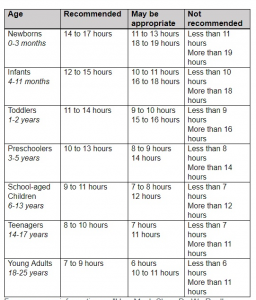By the time your infant is 4 months old, you’ve probably got your breastfeeding or formula drill down to an art. But don’t get too comfortable — your child will soon be ready for “real” food, and you’ll have baby-food jars monopolizing the pantry, messy faces at every meal, and spoons that become airplanes and choo-choo trains. But there’s no reason to stress; with a little patience, you and your baby will quickly get the hang of feeding time.
Feeding your baby anything but breast milk or formula too soon can increase her risk of food allergies and obesity. So wait until she’s 4 to 6 months old before you introduce solids. At this age, her digestive system is probably ready to handle complex foods. Age isn’t the only thing to consider: Your baby needs to be able to hold her head up and sit with minimal support, and she should have lost her tongue-thrust reflex, which makes her push food out of her mouth to prevent choking. If she seems curious about the food you’re eating, reaches for your dinner, or stares you down as you spoon soup into your mouth, it’s a sign she’s ready to add new tastes and textures to her diet.
Start with Rice Cereal
Your baby’s first food should be rice cereal because it’s iron-fortified and easily digestible. (Besides, babies are rarely allergic to it.) Begin with one or two feedings a day, choosing times when your child isn’t tired or cranky and you’re relaxed too. Mix enough breast milk or formula with 1 to 2 teaspoons of cereal to create a semi-liquid, and feed him small amounts using a silicone-tipped spoon. Have a napkin handy because, at first, most of the meal will end up on his chin. But resist the temptation to give up and pour the diluted cereal into a bottle.
Don’t force your baby to continue eating if he shakes his head no, turns away, or refuses to open up after only one mouthful. And if he seems completely uninterested in trying cereal, just wait a week or so and try again.
As your child gets used to rice cereal, you can thicken it and give him larger servings. Still, don’t stop feeding him breast milk or formula — he needs at least 24 ounces, or about four to six feedings a day, in order to get all of his nutrients.
Keeping an Eye on Food Allergies
After a week of rice cereal, you can try to feed your baby other types of cereal like oat, barley, and wheat. (A recent Pediatrics study shows that introducing wheat before your baby is 6 months old may decrease her risk of developing a wheat allergy.) To make pinpointing allergies easier, give your child only one new food at a time and wait three or four days before trying another. Keep an eye out for signs of an allergic reaction or intolerance, like a rash, hives, wheezing, difficulty breathing, vomiting, excessive gas, diarrhea, or blood in her stools. Call your pediatrician in Muzaffarpur, if you notice any of these symptoms (they can take minutes or days to appear), and go to the ER if the reaction seems serious.
Once your baby’s eating a variety of cereals, you can move on to pureed fruits and vegetables. It doesn’t matter which you give her first, but try just one fruit or veggie at a time. If she spits out her pureed peas as if they’re poison, don’t lose hope. “She may purse her lips and shake her head, but it’s usually because its a new taste,” says Loraine Stern, MD, clinical professor of Pediatrics at University of California, Los Angeles. “If you offer it three or four times, she’ll probably take it.”
Finger Foods and More
Between 8 and 10 months, your baby can try soft and textured foods like yogurt, cottage cheese, mashed bananas, and mashed sweet potatoes. He can also use more iron, so try pureed meats like beef, chicken, and turkey. And at this point your baby should be ready to try to feed himself. So give him finger foods, such as tiny mozzarella cubes, pasta, wedges of ripe fruits, cooked veggies, and dry cereals (like Cheerios) that dissolve easily in his mouth. To prevent choking, be sure to cut everything up into cubes no longer than the tip of his pinkie.
Since kids develop taste preferences early on, now’s the time to offer a variety of foods at each meal to encourage your baby to appreciate lots of different flavors and (fingers crossed!) ward off a future picky eater. Don’t put salt or sugar in his food — it’s best if your baby learns to like it without the added seasonings.
By 12 months your child should be eating three meals and approximately three smaller snacks a day, including fruits and vegetables (1/2 cup each); hot or cold cereal (1/4 to 1/2 cup); rice, pasta, or bread (1/2 cup); and protein (4 to 6 tablespoons). Don’t stress too much over the exact amounts, though — your baby will let you know when he’s full.
Food-Safety
Keep these precautions in mind when it’s baby’s mealtime.
- Trash baby food that has been open for more than 48 hours, and never feed your infant directly from the jar.
- Avoid homemade purees of carrots, beets, collard greens, turnips, or spinach because these veggies are high in nitrates. (Processed jarred versions, however, are safe.)
- Be sure to stir any purees you’ve warmed up, and always check their temperature before serving.
- Totally avoid these choking hazards during your baby’s first year: nuts, seeds, raisins, hard candy, grapes, hard raw vegetables, popcorn, peanut butter, and hot dogs.
- Steer clear of honey — it can cause botulism in babies under 1 year.
- Avoid foods that pose a high allergy risk such as cow’s milk, eggs, nuts, peanut butter (it’s also hard to swallow), fresh strawberries, fish, and other seafood.



